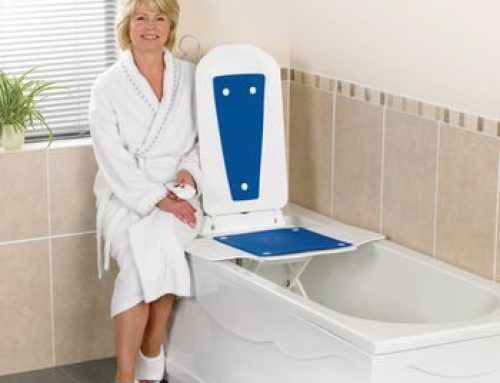When planning for aging at home, one of the most important factors to consider is whether or not your home is wheelchair accessible; everyday activities that were previously simple, such as entering and exiting your home, opening cabinets, or using the bathroom can become difficult and even frustrating.
Luckily, you can plan ahead for home modifications either on your own or by consulting with a CAPS home builder. To plan a home care solution for a loved one with limited mobility, take a close look at each room in the house and visualize which home health care products could improve accessibility:
- Bedroom: Include a phone or alert system near the bed and an overhang lift or manual trapeze to help with getting in and out of bed.
- Bathroom: Consider installing a phone or alert system near the toilet and shower, a bathtub lift (such as the Minivator Bath Bliss 311 Bath Lift) with a bottom between 13-30 inches, a toilet seat lift, and grab bars next to the toilet and in the shower or bathtub.
- Kitchen: Make sure that countertops and cabinet heights are within arms’ reach from a wheelchair, and give table height at least 27” of knee clearance between the floor and the table underside, and clear a floor area of 30”x48” at each seat.
- Entryways: Door widths throughout the house should be at least 32” so that power chairs, electric wheelchairs, and mobility scooters can easily fit through, and stair lifts or wheelchair ramps should be installed in garages or other entryways to the home.
- Stairways: A stair lift, such as the Summit Indoor Stair Lift from Harmar, can help residents easily access a basement or second floor.
In general, to improve home accessibility, all pathways should be wide enough to accommodate mobility scooters and wheelchairs (generally 36” for hallways and 32” for doorways, with the minimum clear space for a turn being 36” in all directions). Your home should be well-lit for visibility at any time of day or night, and light controls should be at a height that’s easily accessible for someone in a wheelchair. Finally, multiple phone and alert systems throughout the house will provide quick help in case of an emergency or a sudden need for help.
While making a house accessible for aging at home may seem like a daunting task, planning ahead for aging at home is easier the earlier you start. If you have questions about what products you need to help a loved one age at home or how to make your home more accessible, give us a call and we’ll be glad to answer any of your questions!
Share this Image On Your Site
Please include attribution to www.homeaccessproducts.com with this graphic.



Leave A Comment
You must be logged in to post a comment.